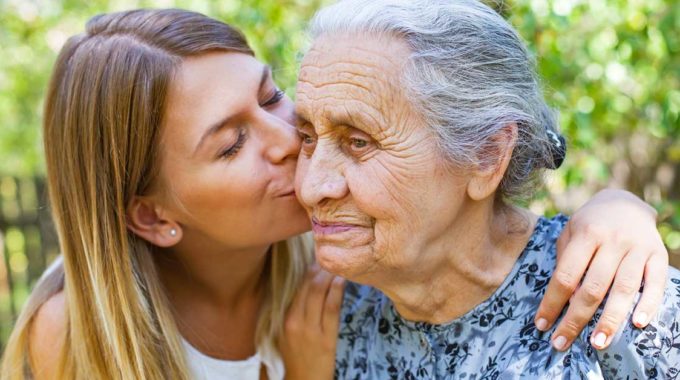
What Families & Seniors Need to Know About Heart Disease
The functions of the heart are indispensable. As the major organ of the circulatory system, the heart is crucial to pumping blood around the body, which carries the oxygen that cells need to develop and function.
It’s unsurprising, then, that seniors need to know about heart disease.
Understanding the problems and warning signs ahead of time can help alleviate some of the long-term risks, as well as making us more healthy overall.
Today, we’ll take a look at the risks, different types of heart disease, and the options available when heart troubles rear their ugly head.
Who’s At Risk From Heart Disease?
People aged 40 and above are typically at an increasing risk of having heart problems. However, even if you are still healthy at that age, chronic heart disorders are still a possibility. Of course, the older we get, the more the general risk of heart-related health issues grows.
Older people, specifically those of us who have passed the age of 65, are susceptible to heart concerns because of the diminished ability to fight off disease. Although there are various risk factors for people who are at risk from heart disorders, old age is right at the top of the list. We have no control over the aging process, despite all the ads that try to tell us otherwise!
With that in mind, seniors should make it a point to lead as healthy a lifestyle as possible, to help limit the potential for heart disease. If you are already diagnosed with a particular heart disease, making healthy lifestyle changes can still help. Healthier decisions such as eating well and getting more exercise can prevent a condition worsening and limit the prevalence of other diseases.
According to surveys, many seniors are poorly informed and don’t know enough about heart disease in its various forms. Despite being the demographic that should learn the most about it, this often isn’t the case. It’s our hope that this article will help you to understand more and act as a reference for future questions.
What Are the Different Types of Heart Disease?
The heart performs its role through the blood vessels. For those with heart disease, this crucial organ has a complex line of dysfunctional processes that complicate the operation of the heart and the blood vessels.
The primary forms of heart disease are as follows:
Arteriosclerosis
This is the type of heart disease that occurs when your arteries start to harden. Ideally, arteries that are functioning normally are quite flexible. But for a person who has arteriosclerosis, their arteries can no longer flex as they normally would, due to the fact that a point of abnormal thickness has been passed.
Atherosclerosis
Fat and cholesterol play a significant role in this particular form of heart disease. When excessive cholesterol and fatty deposits – commonly referred to as plaque – start to build up, the arteries start to narrow. As a result, blood flow and circulation is inhibited. This increases the risk of coronary artery disease and other heart complaints that result from limited circulation.
Angina
Not a heart disease per se but a commonly discussed symptom related to coronary artery disease. This problem occurs when the heart is not getting an adequate supply of blood, resulting in tightness in the upper body and shortness of breath. It is usually characterized by chest pains.
Heart Attack
The most commonly referred to cardiovascular complaint, other heart issues can all feed into having a heart attack. Certain bodily conditions, including excessive cholesterol and arterial hardening, cause blockages or clots in or around the heart. This has a negative effect on blood flow, sudden changes in which can cause a heart attack.
Stroke
Another term you’ve probably heard about in general discussion of heart complaints, a stroke occurs when there is a shortage of blood supplied to the brain. This is caused by a blood clot or a ruptured blood vessel. A stroke is typically signaled by a limited area of the face feeling numb, the slurred speech that can result from that, and a weakness down one side of the body, sometimes causing limited movement or collapse.
Risk Factors for Heart Disease
There are several things that pave the way for a person to be afflicted with certain types of heart disease.
Known to increase heart disease are the following common factors:
- hereditary factors,
- smoking habits,
- a sedentary lifestyle,
- being overweight or obese,
- over-consumption of wrong choices of food,
- extended periods of high blood pressure,
- high levels of cholesterol.
If you know you have a history of heart disease in the family or some other lifestyle factors that would increase the risk of heart attack, it is imperative that you see a doctor and try to alleviate some of these risk factors. Taking action sooner rather than later can serve to delay heart disease and limit the impact when it does actually strike.
Exercise, healthy eating and dietary changes, and maintaining an active lifestyle mentally and physically are among the steps you can take to limit heart disease. Even if you have already been diagnosed with a particular type of heart disease, these ideas can still help to alleviate the effects and even ward off future conditions.
Heart Disease Symptoms
As we’ve already covered, older people are not always well-informed about the stressors and symptoms of heart disease. When we know what the early signs of heart disease are, it’s easier to motivate ourselves and the seniors we love to take action.
Symptoms of heart disease vary, depending on the form of ailment and the risk factors of the individual in question.
Some people experience chest pains, especially in the case of angina. For others, more common signs include palpitations and abnormal heart rhythm, sweating, shortness of breath, dizziness, and nausea. Signs of a heart attack include physical discomfort, specifically in the back, jaw, throat, and/or arm discomfort , as well as a choking feeling and extreme fatigue.
It’s important to note that the signs of heart disease may also be different for men and women. The symptoms noted above are possible across both genders, but women are less likely to experience strong chest pains than men. Rather, more women typically report fatigue and shortness of breath.
Treatment Options for Heart Disease
Upon the discovery of a heart disease, patients will be prescribed a maintenance medication to alleviate the symptoms of the heart disease. Often, when the patient has a medical emergency concerning the heart ailment, he or she will not only be prescribed medicine. Rather, surgery may also be needed. A note of caution: treatment can be dangerous when it involves surgeries although there are different types of surgeries, both for the heart and the blood vessels.
Some of the treatment options include:
Angioplasty: The type of surgery that a doctor will work on if blocked vessels are observed in the patient’s heart. This surgery involves the opening a blocked vessel.
Atherectomy: This type of surgery is the treatment option wherein the plaque of an artery is cut to induce blood flow.
Bypass surgery: This surgery is the channeling of blood from an artery or vein to another part of the body.
Pacemakers: To induce normal heart rate, doctors may resort to putting a small electronic device inside the patient’s body.
Valve replacement: the replacement of the valve of the heart in case it is already too damaged to function properly.
Aging doesn’t have to mean suffering from the worst forms of heart conditions. Arming yourself with what you need to know about heart disease will help significantly in the fight against it, even if it’s just learning to know when your worries are well-founded.
Remember, your health is in your hands. Throw in a little help from friends and family and it is possible to take better care of yourself and do everything possible to limit the potential for heart disease and death.





